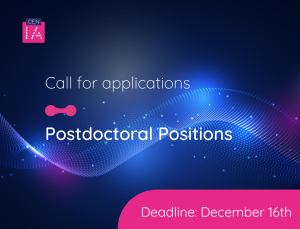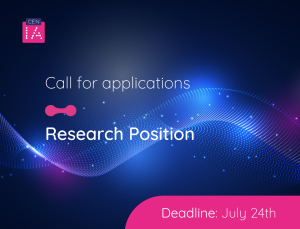
Scientists from the National Center for Artificial Intelligence, an ANID basal center with the participation of researchers from different universities in the country, are examining the functioning of the existing transportation system in Chile, with the aim of improving its performance through processes developed by computers. The information was reported by Francesca Lucchini, engineer in Computer Science and Master in Engineering Sciences, in charge of the project, which responds to the request of the Undersecretary of Transportation within the ministry of the same name.
The professional, who is part of Cenia’s technological development team, said that the main task is to design artificial intelligence tools that make it possible to optimize a large number of functions that are currently performed in a dispersed and resource-intensive manner. Many of them are carried out manually. Referring to this aspect of the Undersecretariat’s work, the professional stressed that this leads to an excess of data that could be avoided by incorporating processes carried out with algorithms.
With this, as the engineer pointed out, the situation they are currently experiencing could be overcome: “They have so much information, at all times, that it is very difficult for them to gather it all and to know where to apply their best efforts.”
Within the mass of data alluded to, she mentioned, among others, those provided by cameras installed on public roads, traffic sensors and traffic lights. Francesca Lucchini indicated that they are analyzing all the factors to design artificial intelligence to improve the overall system performance.
Learning from experience
The experience acquired in previous experiments will be applied in the task, aware of the importance of the correct programming of the instruments so that they produce the appropriate response. She gave as an example the case of the technology company Amazon, that in 2015 developed an algorithm to automate the hiring process, giving a score to each applicant and selecting the best ones.
This AI had been trained by observing patterns in resumes submitted to the company over a 10-year period, however, most were male applicants, given the male dominance in the industry. The team in charge of its creation noticed that the algorithm left out all female applicants, as it “learned” that male candidates were preferable. This example of gender discrimination and bias shows some limitations that AI could have if all variables are not well reviewed during training and errors are not detected in time.
In order to detect and correct these errors in a timely manner, dedicated resources must be employed. The engineer pointed out: “If you don’t know why the algorithm detects certain things, you may be making the wrong decisions. There are several ways to handle that. When working with image detection, as is the case in our project, a mechanism can be introduced to detect which sector of the image the algorithm is paying more attention to. This makes it possible to evaluate whether it is indeed looking at the variables that are intended to be controlled.”
Regarding the Amazon example, Lucchini explains that to handle errors in text “you can use attention mechanisms that highlight words according to how relevant they were to the response.”
At the service of people and not the other way around
Another area of transportation in which Cenia scientists have been working is with heavy-duty trucks. Using images captured by thermographic cameras, they were able to detect if the vehicles had any anomaly that could affect their operation, as well as to identify the location where the problem was occurring.
Going forward, the developer expects artificial intelligence to be a resource that facilitates and improves people’s lives, not the other way around. She longs that it can be applied “in tasks that are usually repetitive and extensive, and these new technologies help by assisting people, saving time and, therefore, leaving more space for other activities.”
She is far from aspiring to a world dominated by machines and maintains that artificial intelligence must be developed taking into account the costs to people: “As scientists, we have to be careful and responsible with the effects of the technology we are producing.”
By: Gonzalo Rojas Donoso. Agencia Inés Llambías Comunicaciones







